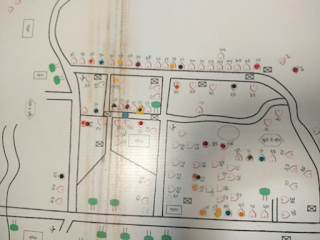


Participating in the Antara Foundation’s fellowship program is my attempt to develop a field-based thought process. At Antara Foundation, scalability is a necessary thought. A scalable solution is one that can be replicated easily to reach a larger population. This approach seems logical to me, because scalability also encompasses program sustainability, replicability, and long-term impact.
The last few months have exposed me to the difficulties of thinking and working with the question – ‘can this solution be scaled’ while on the field. Spending a significant part of your day in the field with constant community interaction exposes you directly to the cause and effect of many existing fault lines. There is an urge to create a positive impact which brings to life the struggles involved in the scalability approach. Scalability is a big win and big wins require a significant amount of time. Room for solving what might be micro issues in the grander scheme of things is unavailable. There are multiple scenarios and cases that I have come across that require a more immediate rapid action plan. To be a spectator for issue X and work on issue Y, even though there is a strong co-relation (a common situation in the development sector) is not easy and hits hard on the conscience.
Recently on a visit to Khandi (Khanpur block, Jhalawar district, Rajasthan), Rithika – an Antara Foundation fellow and I noticed on the village map created by the AAA that there was a household with three yellow bindis, (signifying the presence of a malnourished child in the household). We discovered that three daughters were born into the house in three consecutive years. It is fair to assume that this was in a bid to get a male child and hence the reason for the yellow bindis (A common situation in rural Indian households). For me, the fact that this data is being visualized is huge. Putting this on the wall, is the first step to ensure that these three girls make it out of these social barriers healthy and strong. When the front line workers (AAA) visit the house and counsel them on taking care of their children, there could be a behavioral change. The experience made me believe that this kind of behavioral change cannot occur by simple campaigns and drives, from organizations or governments. Systemic changes are the need of the hour. While every case is important and small wins help the human mind to get by, large impact requires a different attitude.

Village map – Khandi
Scalable solutions require patience and a stronger will, while one is working on the field. While the village map did not directly solve the problem of malnourishment among girls in Khandi, it did create a platform to strengthen the health workers in better understanding the situation and taking the necessary steps. A scalable solution has the capacity to deliver high impact systemic changes rather than campaign format interventions with short lived outputs and unsolved root causes.
My first month in this fellowship program has been intensive and moving. I have often felt helplessness and irritation when there is no direct impact created through my work. Simultaneously, I have developed a more mature outlook on how a program needs to be designed and implemented to create a sustainable solution.
Owais Shafiq was a fellow and later Associate with the Antara Foundation
Disclaimer: The article has been written in personal capacity, and the views and opinions expressed are those of the author